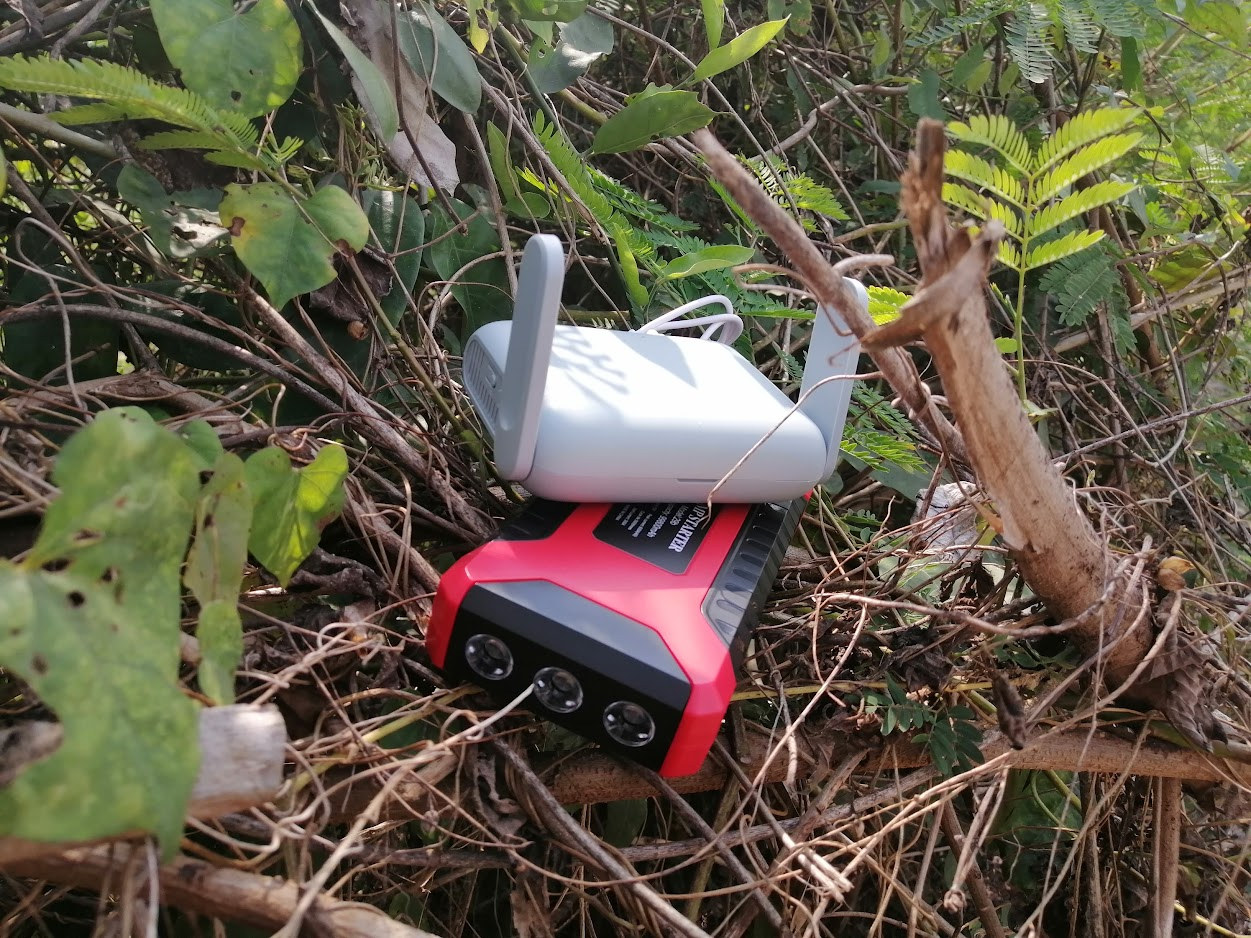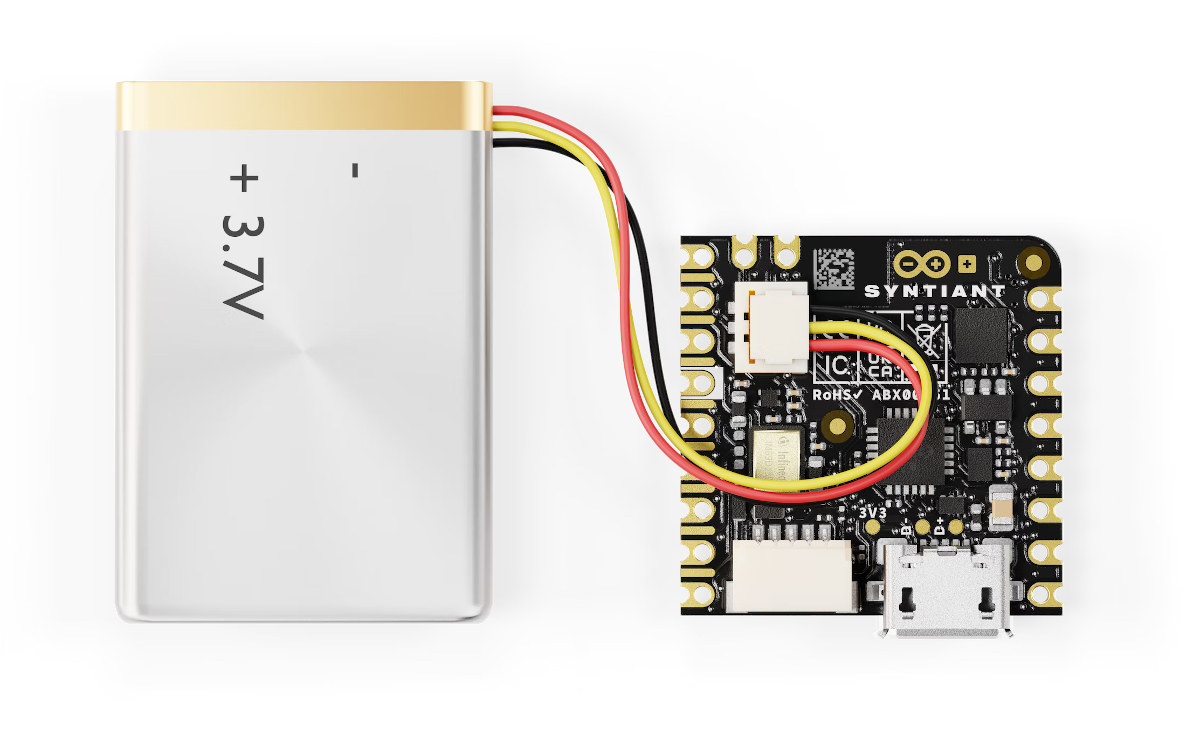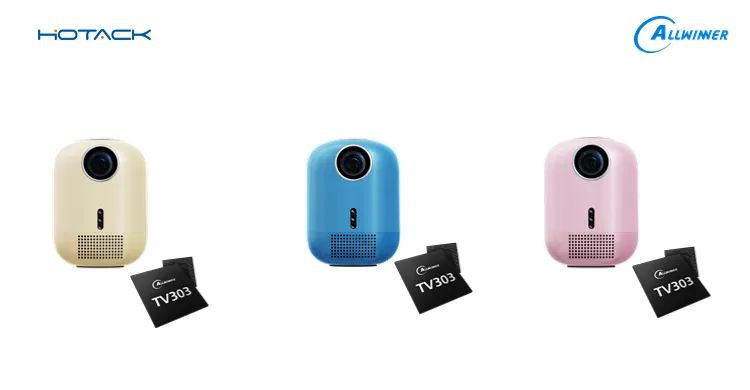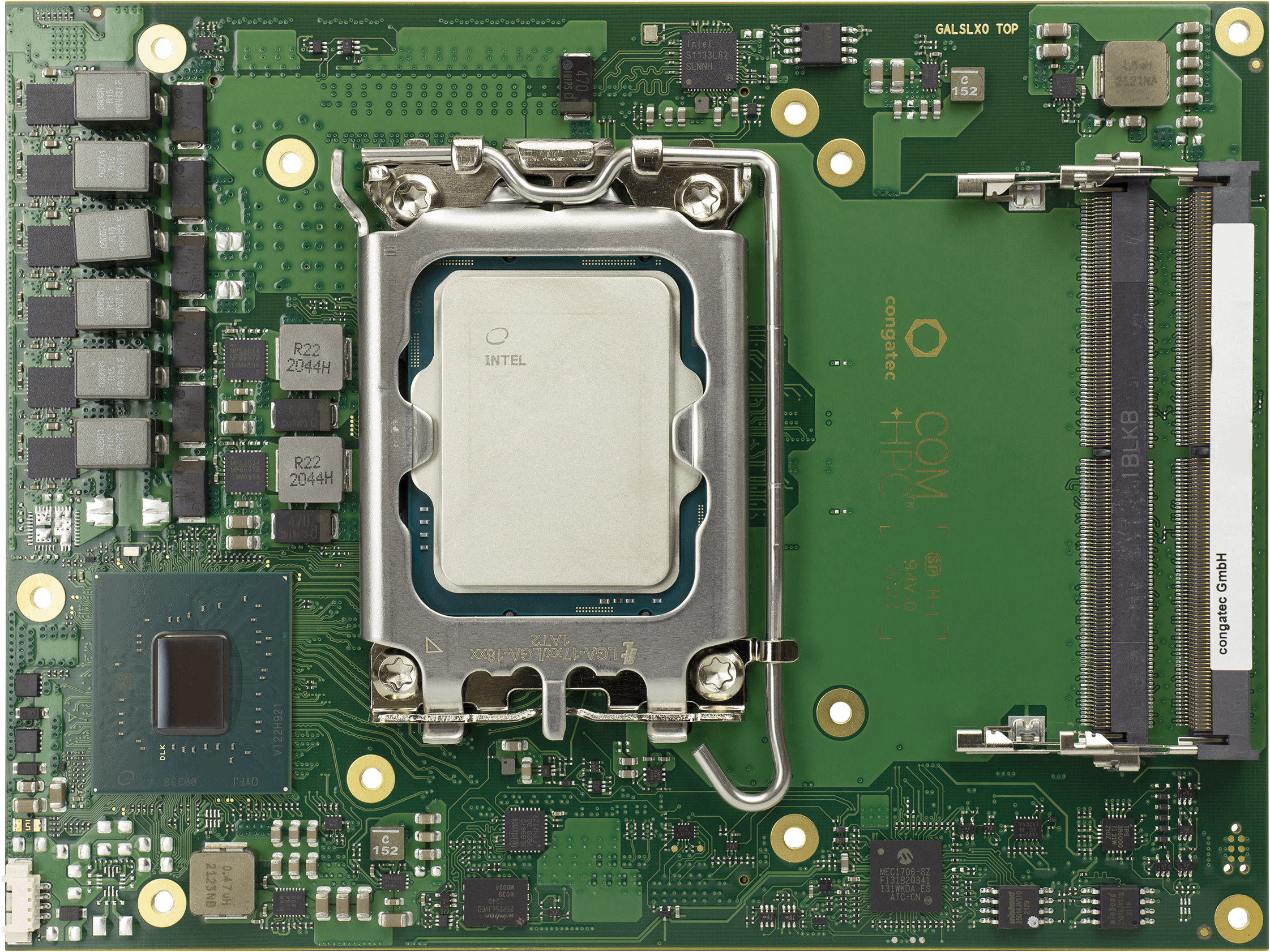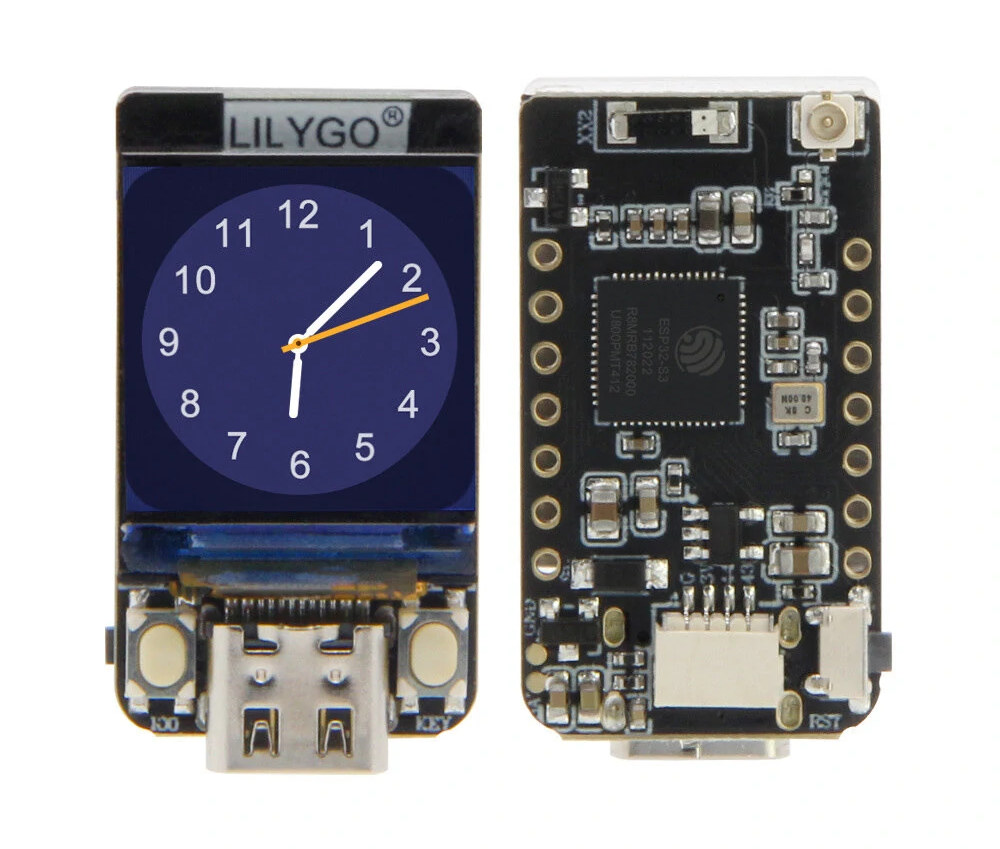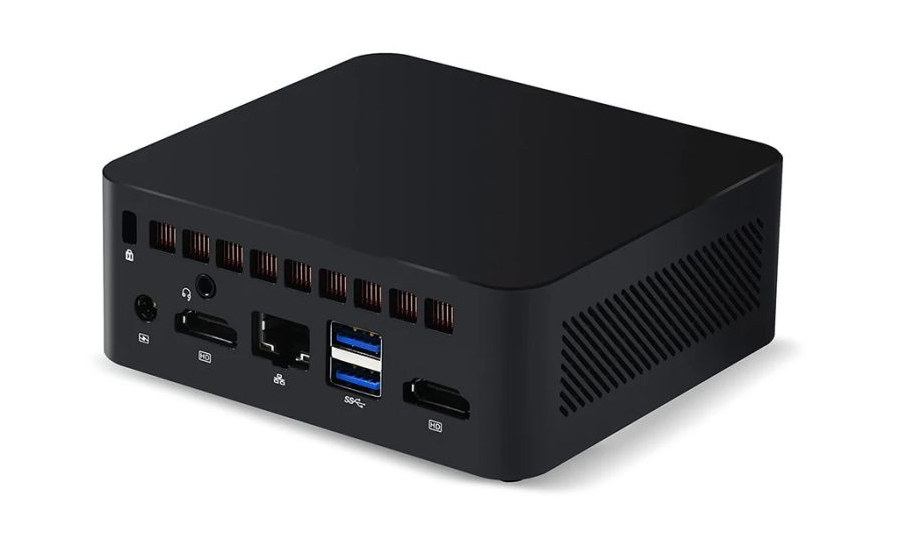In the first part of the review of GL.iNet GL-MT3000 “Beryl AX” pocket-size WiFi 6 OpenWrt router we had a look at the specifications, the package content, and the hardware design with a teardown of the little router. I’ve now had more time to play with the router focusing the review on WiFi 6 performance, and some of its functions such as repeater, NAS, and 4G hotspot. The router also supports VPN client and server modes, the Tor network, and Adguard Home, but I’ll invite readers to check out the GL.iNet Brume 2 security gateway review since I went through all these, and the hardware is very similar minus wireless connectivity. Initial setup of the Beryl AX router If you connect an Ethernet cable to the router you can switch to step two. If you only rely on WiFi for the setup that works too as the Beryl AX router […]
Arduino Nicla Voice enables always-on speech recognition with Syntiant NDP120 “Neural Decision Processor”
Nicla Voice is the latest board from the Arduino PRO family with support for always-on speech recognition thanks to the Syntiant NDP120 “Neural Decision Processor” with a neural network accelerator, a HiFi 3 audio DSP, and a Cortex-M0+ microcontroller core, and the board also includes a Nordic Semi nRF52832 MCU for Bluetooth LE connectivity. Arduino previously launched the Nicla Sense with Bosch SensorTech’s motion and environmental sensors, followed by the Nicla Vision for machine vision applications, and now the company is adding audio and voice support for TinyML and IoT applications with the Nicla Voice. Nicla Voice specifications: Microprocessor – Syntiant NDP120 Neural Decision Processor (NDP) with one Syntiant Core 2 ultra-low-power deep neural network inference engine, 1x HiFi 3 Audio DSP, 1x Arm Cortex-M0 core up to 48 MHz, 48KB SRAM Wireless MCU – Nordic Semiconductor nRF52832 Arm Cortex-M4 microcontroller @ 64 MHz with 512KB Flash, 64KB RAM, Bluetooth […]
Allwinner TV303 quad-core Cortex-A53 “Smart Screen” processor is made for projectors
Previously known for its tablet SoCs, Allwinner has been focusing on low-cost Cortex-A7 and Cortex-A53 processors for consumer devices in recent years, and the Allwinner TV303 quad-core Cortex-A53 processor is yet another one and appears to be the first of Allwinner TV-series processors designed for “smart screens”, notably smart Android projectors. I could not find any references for TV303 on the Allwinner website, but the company did publish a post on Weixin about a “Smart Android Projector” by Hotack based on the new processor and showcased at CES 2023. Allwinner TV303 preliminary specifications: CPU – 4x Arm Cortex-A53 GPU – Arm Mali-G31 VPU – 4K hardware video decoding + image quality engine Video Output – Up to Full HD Video Input – HDMI input The projector itself features two stereo speakers, WiFi 6 connectivity, and can be turned into a Bluetooth speaker. It also supports keystone correction and autofocus. Allwinner […]
conga-HPC/cRLS Raptor Lake COM-HPC Client module supports up to 128GB DDR5 RAM
Congatec conga-HPC/cRLS is a COM-HPC Client Size C computer-on-module based on a 13th gen Intel Raptor Lake processor with support for up to 128GB DDR5 memory through four SO-DIMM sockets. The COM-HPC module also provides up to three DDI display interfaces, two 2.5GbE networking interfaces with TSN support, two SATA storage interfaces, and a range of PCIe Gen 3, 4, and 5 interfaces through the two 400-pin connectors defined in the COM-HPC standard. conga-HPC/cRLS specifications: Raptor Lake-S SoC (one or the other) Intel Core i3-13100E with 4x P-cores @ 3.3GHz / 4.4GHz, 12 MB cache, Intel UHD Graphics 730; PBP: 65W Intel Core i5-13400E with 6x P-cores @ 2.4GHz / 4.6GHz, 4x E-cores @ 1.5GHz / 3.3GHz, 20MB cache, Intel UHD Graphics 730; PBP: 65W Intel Core i7-13700E with 8x P-cores @ 1.9GHz / 5.1GHz, 8x E-cores @ 1.3GHz / 3.9GHz, 30MB cache, Intel UHD Graphics 770; PBP: 65W Intel […]
Intel kills PathFinder IDE for RISC-V processors
Intel has just discontinued PathFinder Eclipse-based development environment for RISC-V processors with the website now reading: We regret to inform you that Intel is discontinuing the Intel Pathfinder for RISC-V program effective immediately. Since Intel will not be providing any additional releases or bug fixes, we encourage you to promptly transition to third-party RISC-V software tools that best meet your development needs. PathFinder was a pre-silicon open-source development environment with support for vairous RISC-V cores, a set of other IP’s, multiple operating systems, and toolchains. It allowed designers to create RISC-V SoCs to and run them on FPGA platforms such as the Terasic developer kit or Startix-10 GX evaluation kit. PathFinder appears to just be one of the casualties after Intel reported a loss for Q4 2022, and announced it will lose even more in Q1 2023 with Tom’s Hardware also highlighting Intel would stop investing in new products for […]
LILYGO T-QT Pro 0.85-inch WiFi IoT display adds support for battery charging
LILYGO T-QT Pro is an ESP32-S3 WiFi and BLE IoT board with a 0.85-inch color display, 4MB flash, 2MB PSRAM, a USB-C port, a few GPIOs, and support for LiPo battery with charging. It is an upgrade to the ESP32-S3-based LILYGO T-QT V1.1 board that also supports LiPo battery power but lacks a charging circuit, so you had to remove the battery and charge it manually each time. The T-QT Pro adds a charging circuit and switches from an ESP32-S3 with an 8MB flash design to one using ESP32-S3FN4R2 with 4MB flash and 2MB PSRAM. LilyGO T-QT Pro specifications: Wireless MCU – Espressif Systems ESP32-S3FN4R2 dual-core Tensilica LX7 @ up to 240 MHz with vector instructions for AI acceleration, 512KB RAM, 4MB flash, 2MB PSRAM, wireless connectivity Connectivity via ESP32-S3 2.4 GHz 802.11 b/g/n Wi-Fi 4 with 40 MHz bandwidth support Bluetooth Low Energy (BLE) 5.0 connectivity with long-range support, […]
ESP32 OpenMQTTGateway smart plug acts as an BLE MQTT gateway and a power meter
The Theengs Plug ESP32 smart plug runs OpenMQTTGateway firmware to serve as a BLE MQTT gateway and power meter compatible with Home Assistant, Homebridge, OpenHAB, DomoticZ, FHEM, Jeedom, NodeRed, AWS, and any MQTT-compatible IoT or Smart Home system. While the Matter standard should improve interoperability between Smart Home frameworks over time, there are still millions of devices already produced that are not Matter compatible, and the Theengs Plug aims to at least partially address this issue by helping users reduce the number of hubs required and have only one that supports different ecosystems. Theengs Plug hardware specifications: Microcontroller – ESP32 dual-core wireless MCU with 2.4 GHz WiFi and Bluetooth LE connectivity Network Protocol – MQTT Power Supply – 100-120VAC, 60Hz, up to 15A Dimensions – 103 x 61 x 34.6mm Temperature Range – Operating: 0ºC ~ 40ºC; storage: -10°C ~ 50°C Humidity – 0%~95% (no condensation) Certification – UL Some […]
Intel Processor N95 Alder Lake-N CPU shows up in entry-level mini PC with 2.5GbE, dual HDMI
We’ve started to see Intel Alder Lake-N processors in mini PCs such MSI Cubi ADL N and Morefine M9 based on announced SKUs, but the Intel Processor N95 processor, which Intel has yet to unveil, is now found in a mini PC sold for various Aliexpress sellers starting at $187 for a barebone system and going up to $384 for a model with 32GB RAM and a 1TB SSD preloaded with an activation version of Windows 10 or Windows 11. The Processor N95 is a quad-core processor clocked at up to 3.4 GHz (Turbo) with 6MB cache, and 16EU Intel UHD graphics clocked up to 1.2 GHz. The 15W processor’s base frequency is shown to be 1.7 GHz in GeekBench while the 6W Alder Lake-N processors have a sub-GHz base frequency. That could mean the CPU performance is quite higher than the 6W N100 and N200 parts, but the GPU […]


